The estimated 65,000 people in “hostages square” in Tel Aviv heard it before they saw it. Like so many sunflowers, their faces turned up to search the clear blue morning sky for the source of the sound. Then it swept into view from the west, from the direction of Gaza.
A helicopter, military brown, was on the way to Ichilov hospital a few hundred metres away. But it diverted. It circled around the crowd giving each person below a view, and then tilted to its right, in an apparent salute to the cheering, waving, smiling faces below.
At the door of the helicopter, the keen-eyed will have seen the outline of a figure almost hanging out, seemingly straining to get closer to the jubilant crowd below.
It appeared to be one of the final 20 live hostages released that morning after two years in Hamas captivity. He used his hands to make a shape: a heart.
About eight helicopters in all swept by, not all of them diverting to put on a show. Some medical cases may have been more urgent than others.
But each received a raucous cheer on what was certainly a highly emotional day for Israel, and one that so many dearly hope will prove to be historic.
The square, nothing much to look at, on top of a car park close to the Israel Defense Forces headquarters, has been where the campaign to bring the hostages home has been led. The question now facing Israel is whether the release can lead to a lasting peace with Palestine.

“I always say that I hope so, you know, but this neighbourhood is not so much friendly,” said Ayelet Lantzer, 63. “I grew up in kibbutz Nir Oz, and was born there before the ’67 war. There were days that we used to go to Gaza to eat hummus, and we went to the beach and we went to restaurants, and we had a very good relationship with the people there.”
Nir Oz, less than 7km (four miles), was where Hamas took seven of the hostages on 7 October, of whom six came home alive on Monday as part of Donald Trump’s 20-point Gaza plan. The seventh, Arie Zalmanowicz, 85, died in captivity.
Since the first week of the war, Lantzer had organised for a permanent encampment on the square, a white tent with a few chairs and lots of posters, as part of an attempt to keep pressure on the Israeli government to prioritise the release of those taken.
She had seen no such effort on the part of Israeli prime minister, Benjamin Netanyahu, she said – a common refrain. But this last hostage release did seemingly close a horrifying chapter, she suggested.
About 1,200 people were killed on 7 October when Hamas launched their attacks and took 251 hostages. An estimated 67,000 Palestinians have been killed in the Gaza Strip since Israel launched its military response, the majority of whom were civilians, leading a UN commission to find Israel had committed genocide in Gaza.
But what next? Few on the square on Monday had any answers, but the US president, Donald Trump, was insisting the war was over – and certainly the overwhelming sentiment was relief.
That was certainly the feeling at 7.15am when Hamas issued their first statement of the day. It was the names of the 20 people they intended to release into the hands of the Red Cross. The first real proof for some that their beloved would return alive.
Images on two big screens on two sides of the square allowed the thousands assembling to see the reaction of the families at Re’im military base near Gaza where they were waiting to be reunited with the lost and now found. The hugs and tears on the screen were echoed in the square.
This release was being chronicled in real time by Israeli broadcasters – and more extraordinary scenes were to follow.
There was word shortly after 8am that seven hostages had been released into the hands of the Red Cross. Then footage appeared on the large screens of jubilant parents receiving video calls from hostages not even among that first tranche. Hamas had apparently allowed them to make calls.
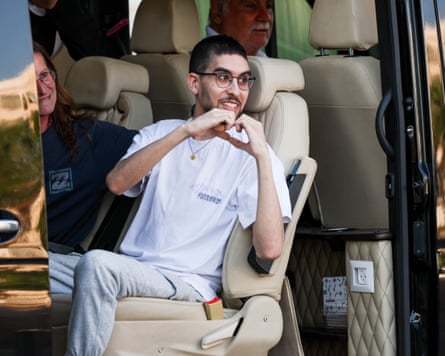
Julie Kupershtein, the mother of hostage Bar Kupershtein, who was working at the Nova music festival as a paramedic on 7 October when he was taken, said: “We were in the compound, and suddenly I had a conversation, suddenly I saw Bar. I screamed to the sky. Crazy. To see them, these pure, righteous children, alive. I’m shaking all over.”
Further images emerged of pale smiling men. The first seven were with the army, it was announced from the stage on the square.
There were energetic renditions of “Habayta” (“Home”) – a song that has become the anthem of the hostage crisis.
Then it was Trump’s perfectly scripted moment.
The large screen was split between images of the US president stepping on to Israeli soil from Air Force One and images of further released men, dark around the eyes, but looking reasonably physically fit.
“Trump did everything,” said Jude Frajdenrajch, 55, who had visited the square every Saturday since the war began as word of the release of the final 13 emerged.
There were chants of the US president’s name and one woman held aloft a placard carrying the words: “Trump’s list”, a seeming nod to the famous Schindler’s list that saved Jews during the Holocaust.
Another piece of the deal was Israeli ministers’ approval of the release of 1,718 Palestinian prisoners and detainees, including 250 terror convicts serving one or more life sentences.
At lunchtime Palestinian media outlets published footage showing the arrival of some of them in Ramallah in the West Bank. All seemed to be going to plan – and then a problem.
Hamas had been due to release the bodies of 28 killed Israeli hostages. But they only appeared able to provide four of them.
It was suggested that the carnage in Gaza had left them unable to locate the buried. It was fodder for the hardline within Netanyahu’s Likud party.
“Hamas’s announcement of the expected return of four bodies today constitutes a failure to meet its commitments,” said defence minister Israel Katz, adding that “any delay or deliberate avoidance will be considered a blatant violation of the agreement and will be met accordingly”.
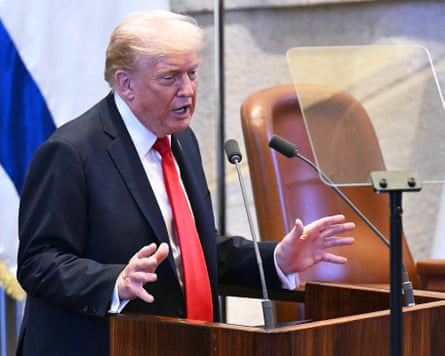
The families of the deceased were also understandably distraught. “From the people of Israel I ask – please, do not forget us,” said Yael Adar, the mother of Tamir Adar, 38, whose body was taken from kibbutz Nir Oz on 7 October. “Take action, demand [their return]. We need you more than ever. The struggle is not over until the last captive returns. It is absolutely forbidden to accept the violation of the agreement.”
This was not something that the Americans were going to let upset Trump’s perfect day. On his arrival at the Israeli parliament, the Knesset, where he was due to give a speech, Trump wrote a message in the guest book: “This is my great honour – a great and beautiful day. A new beginning.”
After a lengthy speech from Netanyahu in which he criticised the rest of the world for failing to stand by Israel and inevitably heaped praise on Trump, it was time for the US president to speak. And did he speak.
He was cheered roundly as he stood in the parliament and outside on the square, and many laughed with him as he began his typically eccentric address. “Nice place,” Trump told the members of parliament. Was he considering a new real estate deal? “The long and painful nightmare is finally over,” he added.
The attention of the crowd in the square nevertheless appeared to drift off as Trump meandered into various rabbit holes including criticising Joe Biden, praising a top donor, Miriam Adelson, and making the familiar claim that the Ukraine war “would never have happened if I had been president”. He also urged the Knesset to give Netanyahu a pardon over the corruption charges he is facing.
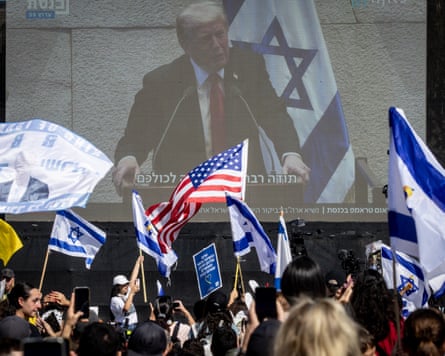
Trump invited Netanyahu to join him at a peace conference in Sharm el-Sheikh in Egypt. The Israeli prime minister declined the offer due to it being a holiday period. There is also an international criminal court warrant for his arrest, and it was reported that the Turkish president, Recep Tayyip Erdoğan, threatened to boycott the summit if Netanyahu attended.
A powerfully emotional day then but perhaps one that also offers some signs of its vulnerability to the character flaws of leading figures.
Shirley Bar Natahan, 44, had tears in her eyes on the square as she watched images of hostages being reunited with their children, wives and mothers. She had been here every Saturday for two years. This was a very good day for all the pitfalls, she said.
“There’s nothing more important than this,” she said. “I think that if we, if this, didn’t happen, I feel like Israel would not have the right to exist. This is why we exist so the Jews can have a safe place to bring everybody home.”
.png)
 3 hours ago
2
3 hours ago
2

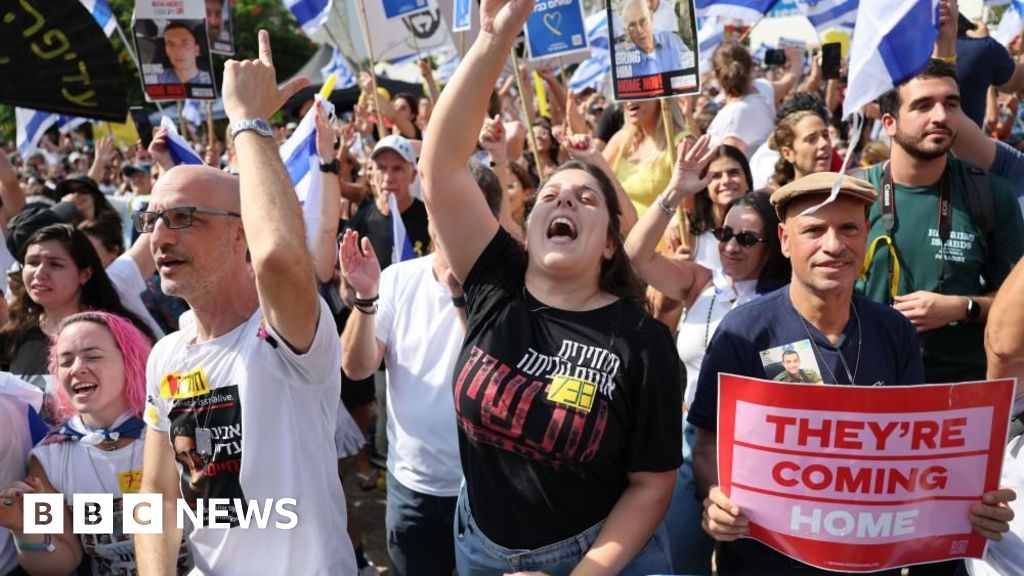




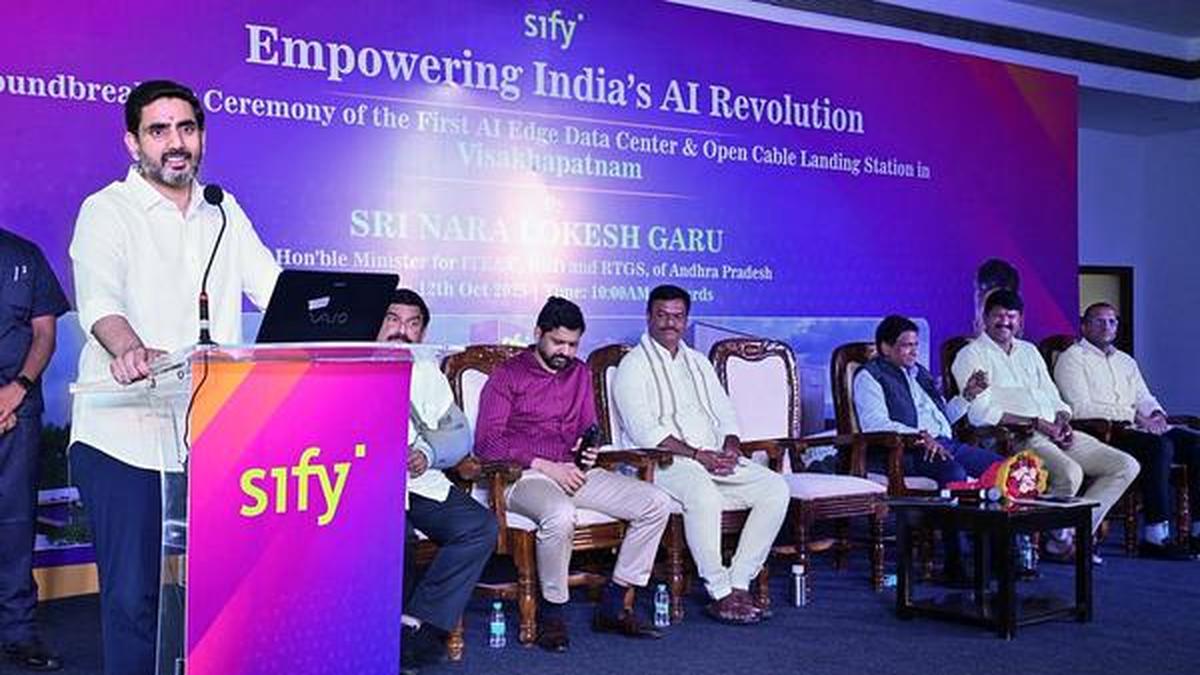

 English (US) ·
English (US) ·